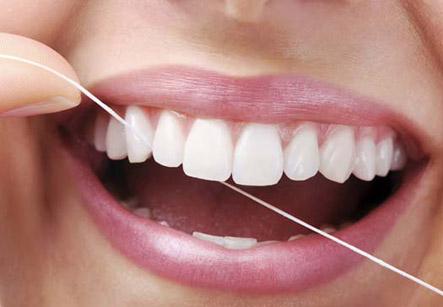Periodontitis
The gum disease:
Oral cavity is full of bacteria. These bacteria, along with mucus and other particles, tend to form a sticky, colorless “plaque” on teeth. in the absence of proper oral hygiene, the plaque can harden and form “tartar” that cannot be removed by brushing. Only a professional cleaning by a dentist or dental hygienist can remove this tartar.
Gingivitis
As the plaque and tartar persist on teeth, the bacteria cause inflammation of the gums which is also called as gingivitis. This causes the gums to become red, swollen, painful and easy to bleed. Gingivitis is a mild form of gum disease. This can usually be reversed with daily brushing, flossing, and regular cleaning by a dentist. There is no loss of bone and tissue that hold teeth in place.
Oral antibiotics may be required to completely eliminate infection

Periodontitis
When gingivitis is not treated, it can advance to “periodontitis. This term is used to describe inflammation around the tooth. In periodontitis, gums pull away from the teeth and form spaces or pockets which can be easily infected. The body’s immune system gets activated due to bacterial toxins and fights the bacteria as the plaque spreads and grows below the gum line. This leads to break-down of the bone and connective tissue that hold teeth in place. As the process progresses, the bones, gums, and tissue supporting the teeth start getting destroyed. The teeth may become loose and have to be removed.
Treatment of periodontitis:
There are several ways developed to treat periodontitis, depending on its severity. The goal of periodontitis treatment is to completely clean the pockets of bacteria and to prevent further damage. Treatment is usually provided by a periodontist, a dentist or a dental hygienist.
Conservative treatments:
In early cases of periodontitis, the treatment can include less invasive procedures, including:
Scaling:
Scaling removes tartar and bacteria from tooth surfaces and beneath your gums. It is performed by using instruments or an ultrasonic device.
Root planing:
This procedure smoothens the root surfaces and prevents further buildup of tartar.
Antibiotics:
The use of antibiotics to treat periodontitis is doubtful. However, dentist may recommend using topical or oral antibiotics to control bacterial infection. Topical antibiotics can include mouth rinses or threads and gels containing antibiotics. Oral antibiotics may be required to completely eliminate infection.
Surgical treatments:
In case of advanced periodontitis, the treatment may require dental surgery, such as:
Flap surgery (pocket reduction surgery):
In this procedure, tiny incisions are made in the gum so that a section or flap of gum tissue can be lifted back. This exposes the roots for more effective scaling and planing. The underlying bone may be reshaped before suturing the gum tissue back in place. This procedure takes about one to three hours and is performed under local anesthesia.
Soft tissue grafts:
When the gum tissue is destroyed by periodontal disease, the gumline recedes, making the teeth appear longer than normal. The damaged tissue can be replaced by removing a small amount of tissue from a donor site such as the roof of mouth (palate) and attaching it to the affected site. This also helps in covering exposed roots and gives the teeth a more natural appearance.
Bone grafting:
This procedure is performed when periodontitis destroys the bone surrounding the tooth root. The graft is acquired from bone of the patient; it may be synthetic or donated. The bone graft prevents further tooth loss by holding the tooth in place. It also serves as a platform for the regrowth of natural bone.
Guided tissue regeneration:
This allows the regrowth of bone that was destroyed by bacteria. A special piece of biocompatible fabric is placed between existing bone and the tooth. The material prevents entry of unwanted tissue in the healing area and also allows the bone to grow back.
Enamel matrix derivative application:
This technique involves applying a specialized gel to a diseased tooth root. This gel is composed of the proteins found in developing tooth enamel. It stimulates the growth of healthy bone and tissue.
These are some steps at home to help reduce or prevent periodontitis, including:
1. A regular schedule of professional dental cleanings, as advised by the dentist
2. Use of soft toothbrush and its replacement at least once in three to four months
3. Use of an electric toothbrush, which is more effective at removing plaque and tartar
4. Brushing the teeth twice daily or after every meal or snack
5. Regular flossing
6. Use of a mouth rinse to help reduce plaque between the teeth
7. An interdental cleaner, such as a dental pick or dental stick.